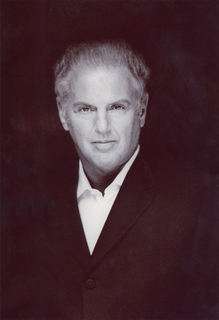|
Back
Mr. Webern Tells a Story New York
Perelman Auditorium, Carnegie Hall
01/16/2010 -
Arnold Schoenberg: Chamber Symphony No. 2, Op. 38 – Piano Concerto, Op. 42
Anton Webern: Six Pieces, Op. 6
Gustav Mahler: Adagio from Symphony No. 10
Daniel Barenboim (Piano)
Vienna Philharmonic Orchestra, Pierre Boulez (Conductor)

D. Barenboim (© Richard Haughton)
Much of the music programmed by the Vienna Philharmonic Orchestra this weekend was composed within three decades of each other, all of it influenced by the so-called Viennese Second School. More important, though, is how this music evolved like succeeding generations of a single organism.
One needn’t have been aware of dodecaphonic esoterica to hear how the lines of Mahler’s Tenth Symphony almost broke loose from their compass, wandering into a kind of tonelessness. Arnold Schoenberg may be a fearsome figure, but what were we to make of those Austrian waltzes which are part of both his Piano Concerto and the Second Chamber Symphony? Hearing the “abstractions” of Webern became less abstract when we read that he was actually illustrating a story–the death of his mother–in visions which take on the strange solo counterpoint of Mahler, and the pointillism of a Debussy prelude.
Holding this together was Daniel Barenboim, himself very much the world citizen. Argentine-born, resident of Paris and London, an emigrant to Israel and now a Palestinian citizen, Mr. Barenboim was concert artist, conductor, and soloist, the latter with a mesmeric encore of Schubert’s A flat Moment Musical
Ironically, the Schubert had far more mystery and atmosphere than the Schoenberg 12-tone Piano Concerto, which Mr. Barenboim played with a breathless delicacy and vivacity. If one forgets about the “non-whistleable” tone row (which Schoenberg claimed came from his heart), this is music which almost dances. Mr. Barenboim allowed that opening movement to easily mutate into tunes, semi-cadenzas, and a not unpleasing waltz. Schoenberg paired up the piano with instrumentation that was a delicate as the piano. Though one couldn’t say the scherzo was anything but dissonant, it was never harsh, and the instruments hopped from one to the other.
Conductor Pierre Boulez sinuously led the orchestra through its paces, cool but never uncaring. The lyric moments of the finale were held in, the dance rhythms were hardly for “steppin’ out”, but with the greatest sensitivity, he allowed the Vienna Phil to do its own dancing around the pianist.
If that was surprisingly delightful–and a fitting reply to the more austere Second Chamber Symphony–some in the audience were fearing the Webern Six Pieces. While ambivalent myself, I read in the program a historical revelation. Webern, that stoic, sculptor of impossible music, was actually writing a story. As he told Arnold Schoenberg, the first movement was a train journey to see his dying mother. The second was a report of her death. The third was picking heather for her bier, the fourth was a funeral march, and the last two were “retrospectives.”
An unlikely story, thought I. But it was true. One could almost heart those Pacific 231 train tracks going by at first. The second movement, with its pppp timpani and low strings and a sudden ffff clash at the climax was, yes, the report of death. The “heather” was less than a minute, and could well have been Debussy in the countryside. The funeral march was was an internal nightmare.
Not only could one follow this story, but its diaphanous beauty, under Mr. Boulez, was unforgettable.
The only comment on the Adagio from Mahler’s “Unfinished” was that it was performed by the Vienna Philharmonic. That should suffice. Other orchestras tend to slurp those great string descents together: last night, the Vienna Phil strings turned them into fountains of gold. Other conductors can’t wait until the mammoth chords toward the end of the work. Mr. Boulez edged his orchestra into them, so instead of sounding like the crack of doom, they broadcast a radiance throughout Carnegie Hall.
Radiance, though, was the keynote of the night, Radiance and, even more important, a new way of clarifying and understanding this bewildering evolution in art.
Harry Rolnick
|